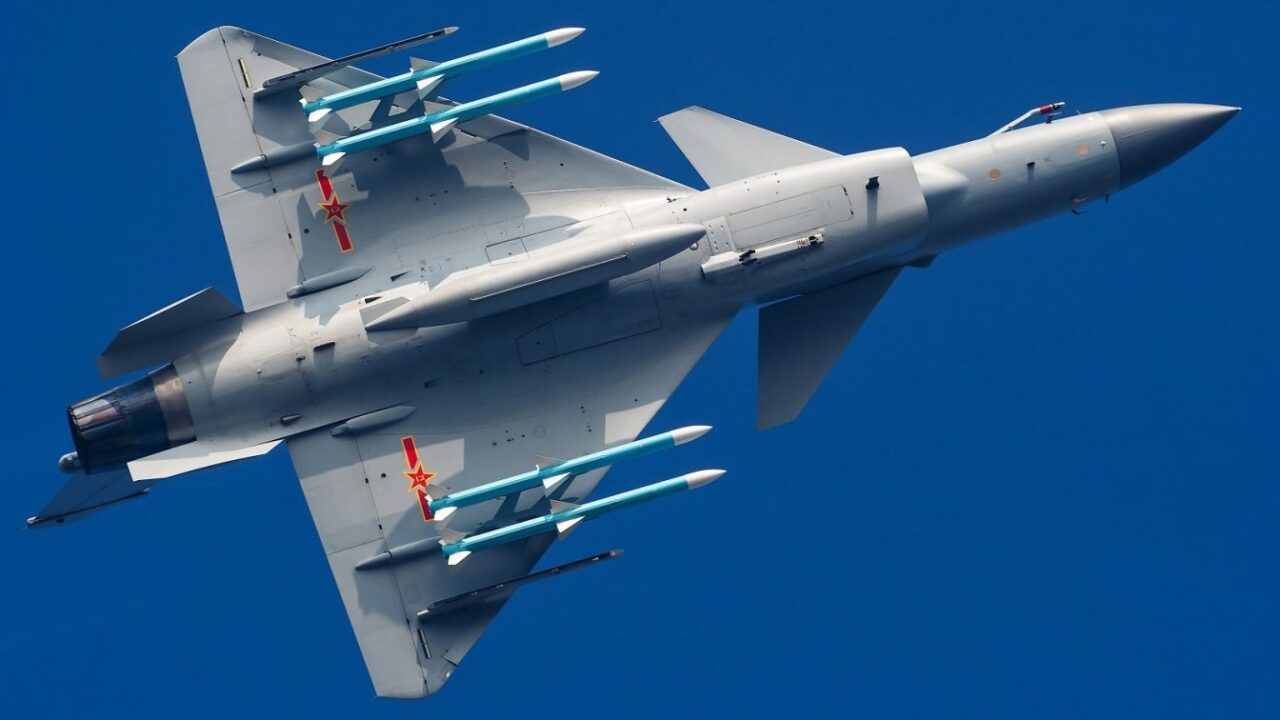China’s J-10 Fighter: Can It Take on America’s F-15, F-16, or Even F-22? Here Is What We Know – The Chengdu J-10 (NATO reporting name: Firebird), also known as the “Vigorous Dragon” has been China’s attempt to develop a combat aircraft that could match Western fighters in terms of performance or capabilities. Development of the J-10 actually began in 1988 and it was intended to counter the threat posed by Soviet fourth-generation fighters including the MiG-29 and Su-27.
The J-10 was originally conceived as an air-superiority fighter for the People’s Liberation Army Air Force (PLAAF), but the collapse of the Soviet Union in 1991 lead towards its shift to that of a multi-role aircraft. Produced by the Chengdu Aircraft Corporation (CAC), the Vigorous Dragon (Meng Long) made its maiden flight in 1998 and entered service with the PLAAF in 2004.
The single-engine, lightweight aircraft is capable of all-weather operations. It is configured with a delta wing and canard design that sets the aircraft apart from Russia’s MiG-29 or the United States’ F-16, and it is more reminiscent of the French Mirage series of combat fighters. However, unlike the Mirage, the J-10 features the two canards right behind the cockpit – and this provides for greater maneuverability. It also features fly-by-wire controls. While it was mainly designed for air-to-air combat, it can also perform strike missions.
While the jet was seen as a great leap forward for China’s military aviation capabilities, Beijing clearly lacked the technology to build its own advanced jet fighter engines. Instead, the unique air intakes on the J-10 actually lead to a Russian-built engine, the AL-31. That particular engine was originally designed for the Russian-built Su-27 (NATO reporting name: Flanker) for use in a pair – yet the J-10 actually operates the Russian engine as a single unit.
This Dragon Has Claws
The J-10 is equipped with 11 external hardpoints that include five on the fuselage with one on the centerline, as well as a pair of hardpoints on each side of the fuselage and three on each wing. Those outer wing stations can carry air-to-air missiles such as the Chinese-built Python 3 PL-8, P-11 or PL-12; or the Russian Vympel R-73 (AA-11 Archer) or R-77 (AA-12 Adder).
According to AirForce-Technology, the PL-8 infrared homing short-range air-to-air missile, a variant of the Israeli Python 3 missile, was manufactured in China under a licensed production agreement by the China Academy (formerly the Luoyang Electro-optics Technology Development Centre), while the PL-11 is a licensed-manufactured variant of the MBDA Italy Aspide medium-range air-to-air missile.
For surface attack role the J-10 can also carry up to six 500-kg laser-guided bombs, free-fall bombs, or pods with 90 mm unguided rocket. The aircraft also has a single-barrel 23 mm cannon.
The J-10 is also fitted with a forward-looking infrared and laser target designator pod. It was developed to support the deployment of laser and satellite navigation-guided weapons. The aircraft also employs an indigenously designed pulse-doppler fire control radar, which is capable of tracking 10 targets simultaneously and attacking four of them. The estimated maximum detection range is 100 km.
According to estimates as many as 468 of the J-10 Vigorous Dragon have been produced, including the J-10C variant, which features upgraded avionics and an improved jet engine. They can also fire the new Chinese air-to-air missiles, which include some advanced long-range active-radar homing designs.
The aircraft’s actual combat performance can only be debated, but as China has set its sights on the far more capable J-11 and has a focus on developing even more advanced aircraft, the Vigorous Dragon could have its wings clipped before it is actually needed in a fight.
Peter Suciu is a Michigan-based writer who has contributed to more than four dozen magazines, newspapers, and websites. He regularly writes about military small arms, and is the author of several books on military headgear including A Gallery of Military Headdress, which is available on Amazon.com. Peter is also a Contributing writer for Forbes.

